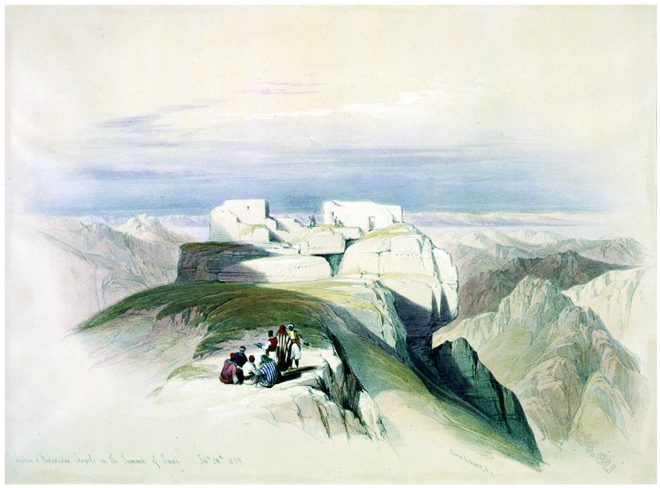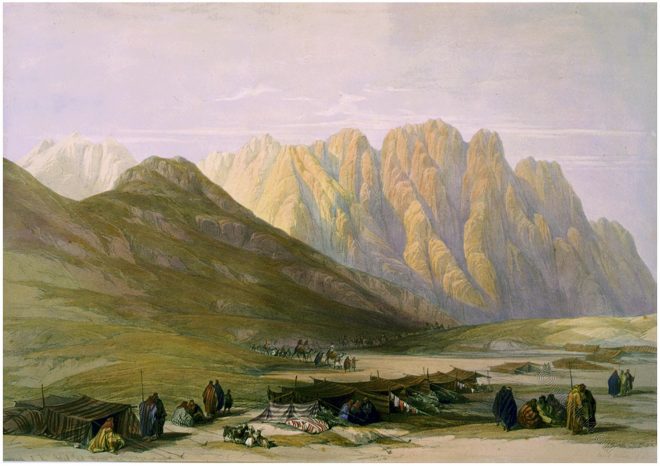Travelers at the wells of Moses, or Eyun Musa, on the eastern side of the Gulf of Suez.
Category: 1839
Convent of St. Catherine with Mount Horeb, Egypt.
The convent of St. Catherine. “The front of Mount Horeb rose like a wall before us, and one can approach quite to the foot, and touch the Mount.”
The convent of St. Catherine Mount Sinai looking towards
The Artist has taken the Sketch about due South of the Convent, looking upon the track which he pursued from the presumed Plain of the Israelite Encampment.
Ascent to the summit of Mount Sinai.
Journey to Mount Sinai. The path to the summit of Mount Sinai leads through a gorge in the southwest. One of the Monks of the Convent stationed himself there in prayer.
Ascent of the lower range of Mount Sinai, 1839.
This Sketch gives a portion of the Israelite march to Sinai. The foot of the Pass before us, called by the Arabs Nukb Hâwy (Windy Pass).
The Christian and Mohammedan Chapels on Mount Sinai, 1839.
Those Chapels are placed on what is traditionally regarded as the summit of Sinai.
Kittim, Cyprus, View of Larnaca, 1836.
The island of Cyprus was known to the Hebrews under the name of Chetim (or Kittim), from Kittim the son of Javan, the son of Japhet, the son of Noah.
Chapel of the convent of Saint Catherine on Mount Sinai.
The interior of the Chapel of St. Catherine is probably the oldest and the richest of all the Eastern churches
The Rock of Moses in Wady-El-Leja valley, west of Mount Sinai.
The “Rock of Moses” is, from its size, a remarkable object: it rests isolated where it has fallen from the eastern Mountain above
Encampment of the Aulad-Said, Mount Sinai
This scene represents the arrival of the caravan of the Artist and his companions, in the country, and at the tents of the Aulad-Sa’id.










